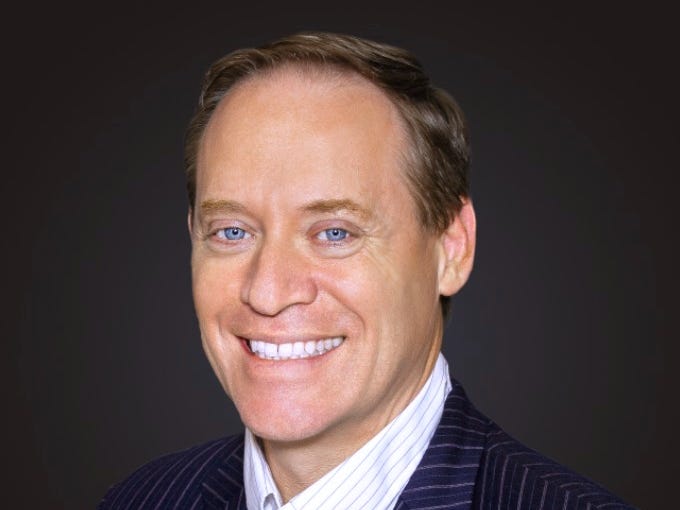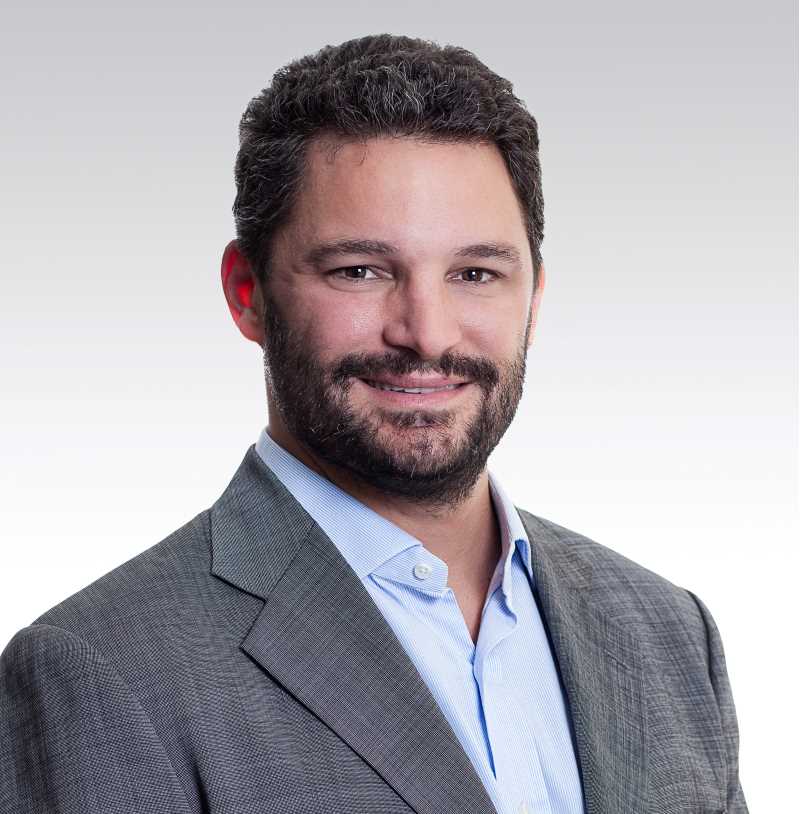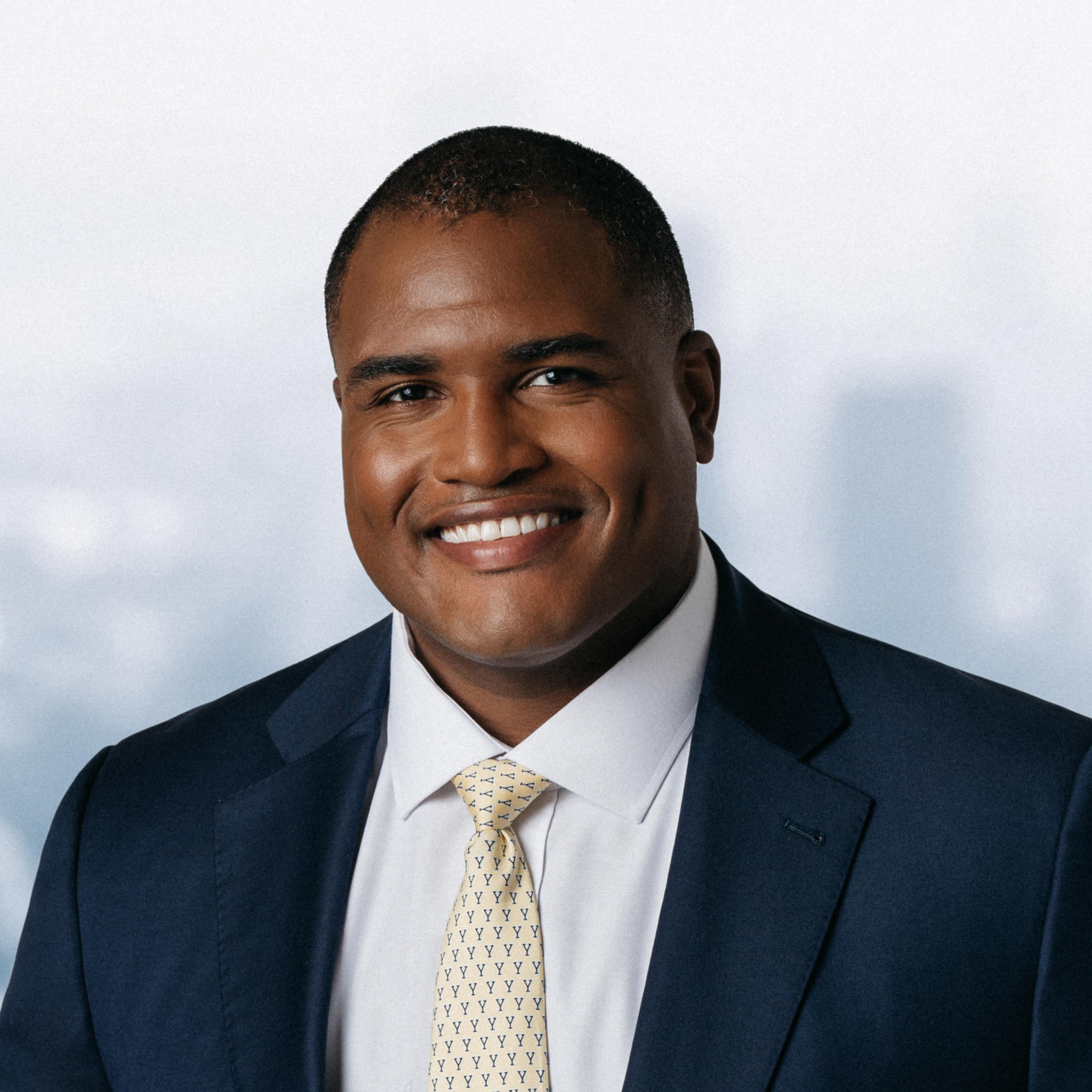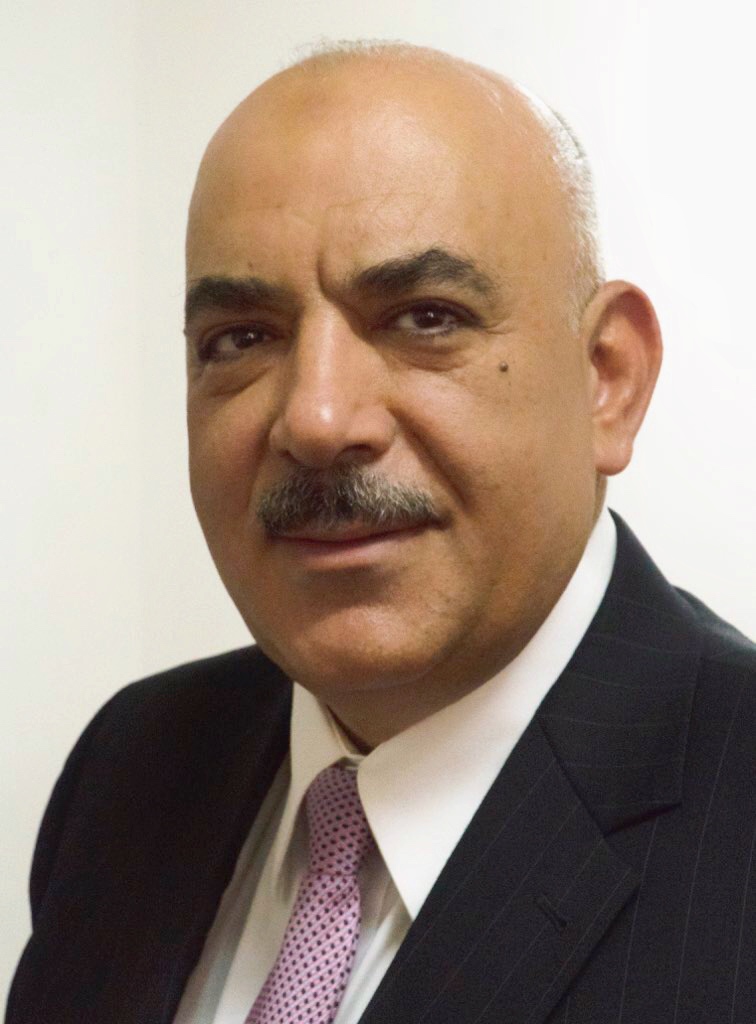Transcripts

Erik: Joining me now is Mike Green, chief investment strategist and portfolio manager for Simplify Asset Management. Mike, it's great to get you back on the show. It's been too long. I want to start with this whole question of inflation and monetary policy. Jim Bianco really got my attention with a tweet thread he had up last week where he said, hey, I think maybe inflation has already bottomed and is about to start increasing. And, of course, the consequence of that could be, or at least I think the consequence of that is, just about everybody in the market is, in my opinion, very complacent and feeling that it's a certainty. We just know now that there's going to be rate cuts, the Fed said there was going to be rate cuts, there have to be rate cuts, especially in an election year, the whole, you know, 2024 is going to be punctuated by rate cuts. What if the data told the Fed to go the other direction, and we had rate hikes between now and the election? Feels to me like nobody's positioned for that. Is that a risk? And should we be thinking about that?
Mike: Well, I think it's always a risk. But I think it's important for people to recognize that, that actually is a priced risk, right? So, if I look at the options surface, in the SOFR futures, which would be the way the mechanism that you would typically use for trading those types of expectations, there's about a 15% chance priced in currently, that the Fed will actually hike rates at some point this year. Now, that's heavily skewed. Let's be really clear about that. That's heavily skewed towards rate cuts. But the cone of possibility is there for rate hikes. And I'm not really sure that I agree with Jim that it is, as ignored a prospect as he is indicating, I think there's a general consensus that inflation has retreated. And it is likely to head towards the 2% goal that the Fed has articulated. I think there's an awful lot of conviction that there are multiple waves of inflation that will carry through, and that that's going to be a much more challenging path. But a lot of the discussion is around, is the right answer 3%, not so much as the right answer 9%. So I think 9% would clearly surprise people, I think that's, you know, return to the high levels that we saw, or in a repeat of the 1970s, even higher levels. I think that would be a catastrophe for markets in terms of expectations. I just don't share Jim's conviction that that's what's actually happening. I think he's misreading the data.

Erik: Joining me now is Tian Yang, CEO and Head of Research for Variant Perception. Tian prepared a slide deck, which everybody is going to want to download, Variant Perception is very well known for their excellent graphs and charts. Registered users will find the download link in your Research Roundup email. If you don't have a Research Roundup email, it means you're not yet registered at macrovoices.com. Just go to our homepage macrovoices.com, click the red button above Tian's picture that says, looking for the downloads. Tian, I gotta compliment you, the last time that we had you on the show, you mentioned one of the leading indicators which your firm is particularly well known for, called LPPL. And I'm going to have you explain what that means in just a second. At that time, you said the LPPL indicator was flashing a basically a top or at least a short term top on the gold market. You called it, to the day, and we saw the market trade off substantially from there. Tell us a little bit more, just so we can understand this, how that indicator works. And is that same indicator flashing any signals on, I don't know if it's gold or any other markets right now.
Tian: Yeah, well, first of all, thanks for having me back. Always glad to be on MacroVoices. Regarding LPPL, it stands for Log-Periodic Power Law. And to us, it's a better model to figure out the end of a trend, compared to kind of more standard things people might use, such as looking at RSI, or looking at deviation from moving averages. Essentially, the marginal edge you get with LPPL is that it captures the underlying wave of the market and not just kind of the parabolic price move. So in a way, you’re not just getting a parabolic price move but with this kind of extra condition to understand that the market is behaving in a disorderly pattern, where essentially, the price action speeds up as it exhausts. So to us, this is a kind of typical trading pattern you see towards the end of a lot of fairly major trends. And typically, the risk-reward for a fade is usually quite good. Now, we didn't obviously come up with an idea all by ourselves, Didier Sornette is kind of considered the, I guess, the godfather of LPPL and popularizing it. I think we've just tried to make it a lot more practical and actionable, you know, get the models running in daily intraday basis. So, obviously, people that are interested to find out more, a quick Google will work but in terms of life today, I think, well, even just literally before we got on, we got an LPPL crash climax on palladium. So it feels like maybe this is it's finally time. I mean, it's been a pretty mega, that downtrend, many false storms. It's also kind of interesting because the linkages to kind of South Africa, and South African equities have also been extremely bottomed out, years of kind of foreigners withdrawing money. So I think palladium is potentially a very interesting one for a tactical bounce. The other one, which is probably not going to be that surprising to listeners, is China has had multiple LPPL crash climaxes in, essentially, the last few weeks on various China linked equities. So on that, the one thing I will say is that, obviously with a lot of the structural problems in China, you know, I think most investors are probably wised up to the fact that a lot of these things are sort of features and not bugs, of investing Chinese assets. But nevertheless, there's going to be very interesting kind of trade structures you can put around it in a one by two core spreads and things like Han Shan you know, there's a lot of these kind of very cute trade structures where you can cap your downside, and get the exposure, you know, if we get a squeeze, so, you know, those are kind of a couple of kind of live trading signals as generating right now.

Erik: Joining me now is Gavekal co-founder Louis-Vincent Gave. Louis, it's great to get you back on, I really enjoy our conversations, particularly just because you live outside the US, you have the non-US perspective, which I think balances a lot of the other guests that we have. So, I really want to talk to you about where we are in the overall big macro picture cycle. I lifted my S&P hedges this morning, with a lot of trepidation as to whether I was making the right decision. It seems to me, like it's just really hard to argue with, we have clearly a breakout to new all-time highs on the major stock indices. In a year when the Fed, which we all know is more political than it admits to being, has an incentive to kind of goose the markets into the election. There's headwinds on all fronts, it seems like there's a perfect setup for the markets to just melt higher. And to be hedged with the put spreads that I was holding didn't make sense. When I got your preview of a post you have coming up called, “Party like it's 1999,” when I read that title, I knew what was on your mind without even having to read the first paragraph, I knew exactly what you were thinking. So for anybody, it might not be completely intuitive to what's up with 1999. Why does this feel like that to both of us? And what should we make about it in terms of risk management?
Louis: Well, good luck on lifting your hedges. I hope it works out. Thanks so much for having me. Look, I always get so much out of these conversations. And it's a great pleasure to catch up once again. Look, I think in 1999, for those who lived through it, we had a deeply concentrated market. You had markets where in essence, 30 names, were making up most of the gains in the S&P500. It was all about tech, it was all about communication services. And if you owned value stocks, if you owned energy, if you owned anything but tech, and that wasn't just in the US, by the way, it was also true. You know, you needed to own France Télécom, you needed to own Nokia Ericsson, and people who didn't own those stocks, by the end of 1999 were fired more often than not. And the money went to the guys who did own these names. And that promoted for the concentration. Now, the good news for you, and that given the fact that you lifted your hedges, the market continued to absolutely melt up in the first three months in the first quarter of 2008. And then that market melt up continued to be concentrated. So yeah, the piece I sent you on “Party like it's 1999,” I think, if you look at the past year, we have had a fairly concentrated, a very concentrated not fairly, very concentrated markets, up until November 12 of last year, which is really what, I guess 10 weeks ago, so the S&P equal weighted was actually down for the year. And, of course, treasuries were down for the year. So last year, up until basically early November, if you weren't into Mag Seven, if you own, let's say some bonds, and if you own some equities that weren't Mag Seven, you were actually having a pretty dismal year. Now, what happened, right at the end of October? If you remember, at the end of October, bond yields were reaching 5%. And there were some failed auctions and people were talking about term premium for bonds. And the whole environment looked pretty dicey and regional banks looked like they were going to take out the lows, their lows of Silicon Valley Bank, the Fed basically goosed the BTFP program. Basically, it didn't say, look, I'm going to turn around and buy a bunch of treasuries, but what it did do is tell all the commercial banks, hey, guys, here's a bunch of free money, we're giving you a free arbitrage of 75 basis points between the money you can borrow from us and then turn around and buy US treasuries in doing so. And so it turns out, lo and behold, that banks really, really like making free money. So you know, bank shares, regional bank shares retire and bonds rallied in the equity market, broadened out from the seven names that we all know, into something much broader. And then you get to the start of this year, and I take your point that the Fed does want to goose things up to make sure Trump doesn't get reelected. And by the way, it's not just the Fed. If you look in Europe, I think today in Europe, we have in early June, we have the European Parliamentary elections. I think most governments in Europe are petrified at the rise of the populist right in Germany, and Holland and France and Sweden, you name it, and very afraid that the populist right is going to absolutely crush it at the coming European Parliamentary elections. You also have important elections in India and in India, you have Modi today, that is basically really cranking up all the infrastructure spending, making sure that all the boys have jobs. And so, you have a lot of very, very strong growth in India.
And then finally, you look at China. And China's got a very different dynamic going on. But the one thing you do know about China, is that right now, you're seeing easing of fiscal and easing of monetary policy. So ,you look all around the world, US, Europe, India, China, basically everyone is easing fiscal and easing monetary policy. Except, so to your point, it's like, in an environment where everybody's trying to goose up their economy and goose up their markets, why have hedges, right? And here, this brings us to what's happened in the past few weeks. In the past few weeks, the Fed has actually pulled the plug on the BTFP. Now, the BTFP program was always going to end that sort of free money to the regional banks I just described, that was always going to end in March. But basically, the Fed said, you know what, I'm actually raising the interest rates at which, a couple of weeks ago, at which I lend to the banks, so I'm taking the arbitrage opportunity away. And lo and behold, since then, what have you seen? You've started to see bond yields creep back up, and you've gone right back to a market that is getting narrower and narrower, except that this time, it's no longer Mag Seven, it's now Mag Three. If you look at the names that are actually making new all-time highs amongst the mega cap tech stocks, Meta is making all-time highs and Microsoft is making new all-time highs and obviously Nvidia is making new all-time highs. But Apple isn't, Alphabet isn't, Amazon isn't yet, Amazon may still, and Tesla definitely is not. And maybe we can come back to that in a little bit. So, you have a market, to me, that looks like it's getting narrower and narrower, which is usually not a great sign of health for a market.

Erik: Joining me now is 42 Macro founder Darius Dale. Darius, as always, has prepared an extensive slide deck to accompany today's interview. Registered users will find the link to the slide deck in your Research Roundup email. If you don't have a Research Roundup email, just go to our homepage macrovoices.com, click the red button above Darius’s photo that says Looking for the Downloads. Darius, it's great to get you back on the show. We've kind of made a tradition of doing January interviews for the last few years, you've had some really good calls at the beginning of the year. I guess we slipped it into the beginning of February this year. But give us the big picture. What should we expect this year? Last we had you on, you were still expecting a recession and maybe a lower low in the bear market. Needless to say, we're looking at new all-time highs. So, how's the new market data line up with your expectations?
Darius: Yeah, Erik. Thanks, again, for having me back on the show. It's always a pleasure. So just to make one quick caveat to your intro there, the last time I was on the show, we were calling for a blow off top in the equity market as a function of a potential recession on the calendar that is sensitive.

Erik: Joining me now is Dr. Anas Alhajji, a managing partner of Energy Outlook Advisors, former chief economist for Natural Gas Partners, and now recently named the number three most influential social media influencer on the topic of oil and energy markets outstripping, Dan Yergin and a number of other notable people considerably. So congratulations on the new title, sir.
Anas: Thank you. I don't know whether this is true or not. But thank you.
Erik: Well, I don't know how they came up with it. But I was certainly proud for you the day that I saw that, and hey, we discovered you on MacroVoices. So everybody, just remember where you found the good doctor from. Well, it's great to have you back on MacroVoices. I want to dive right in because the world has changed considerably since the last time that we talked. You just did an Excellent Spaces last week, our listeners got that in last week's research roundup email. So if you haven't listened to that, folks, be sure to.
Why don't we start with a quick update on what's going on with the Yemen war and how it has changed the face of the oil market? And then tie that into what you told us last year, is we were coming to the end of 2023. How does the forecast look into 2024, now with everything that's changed in the world?
MACRO VOICES is presented for informational and entertainment purposes only. The information presented in MACRO VOICES should NOT be construed as investment advice. Always consult a licensed investment professional before making important investment decisions. The opinions expressed on MACRO VOICES are those of the participants. MACRO VOICES, its producers, and hosts Erik Townsend and Patrick Ceresna shall NOT be liable for losses resulting from investment decisions based on information or viewpoints presented on MACRO VOICES.
